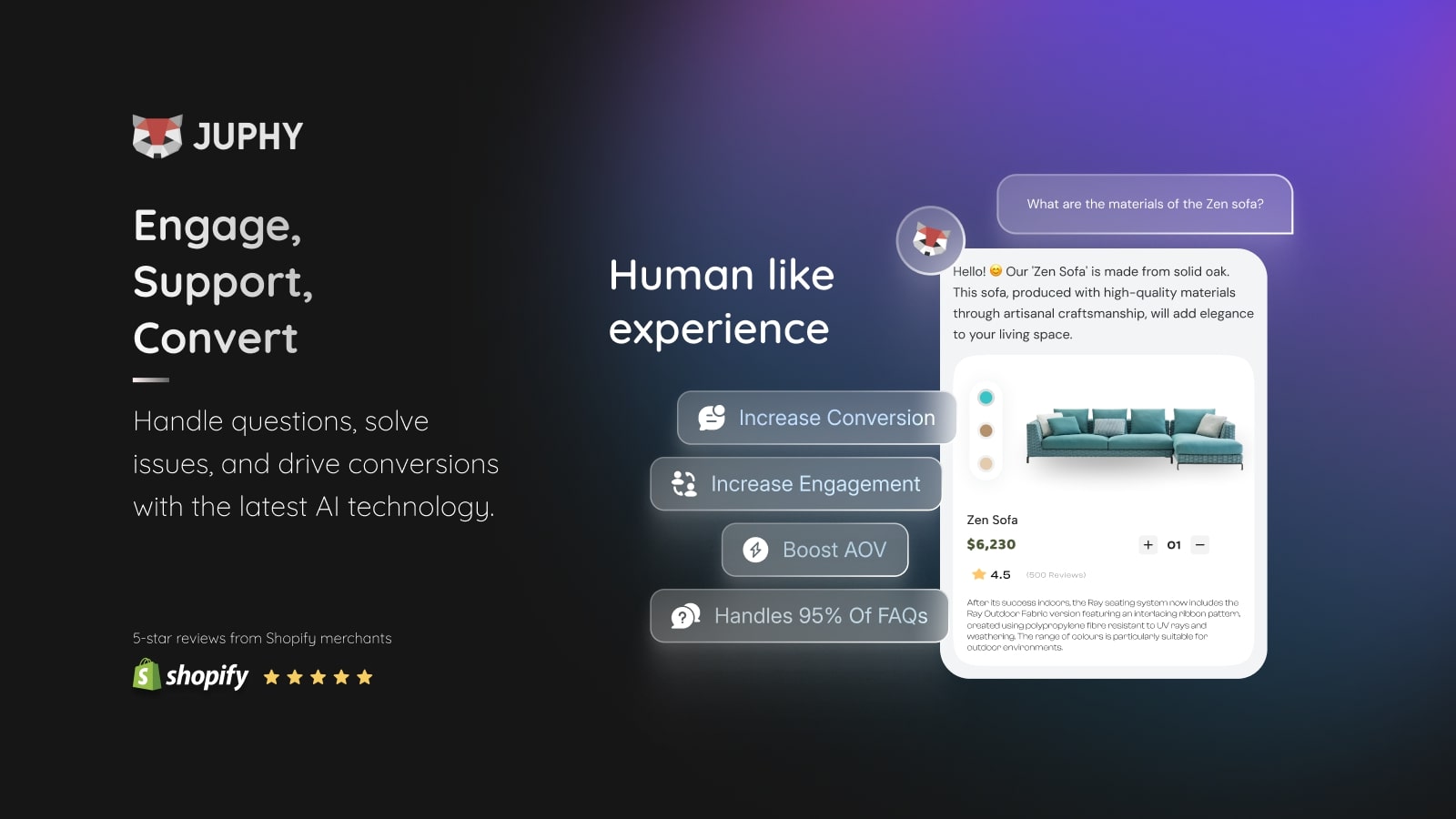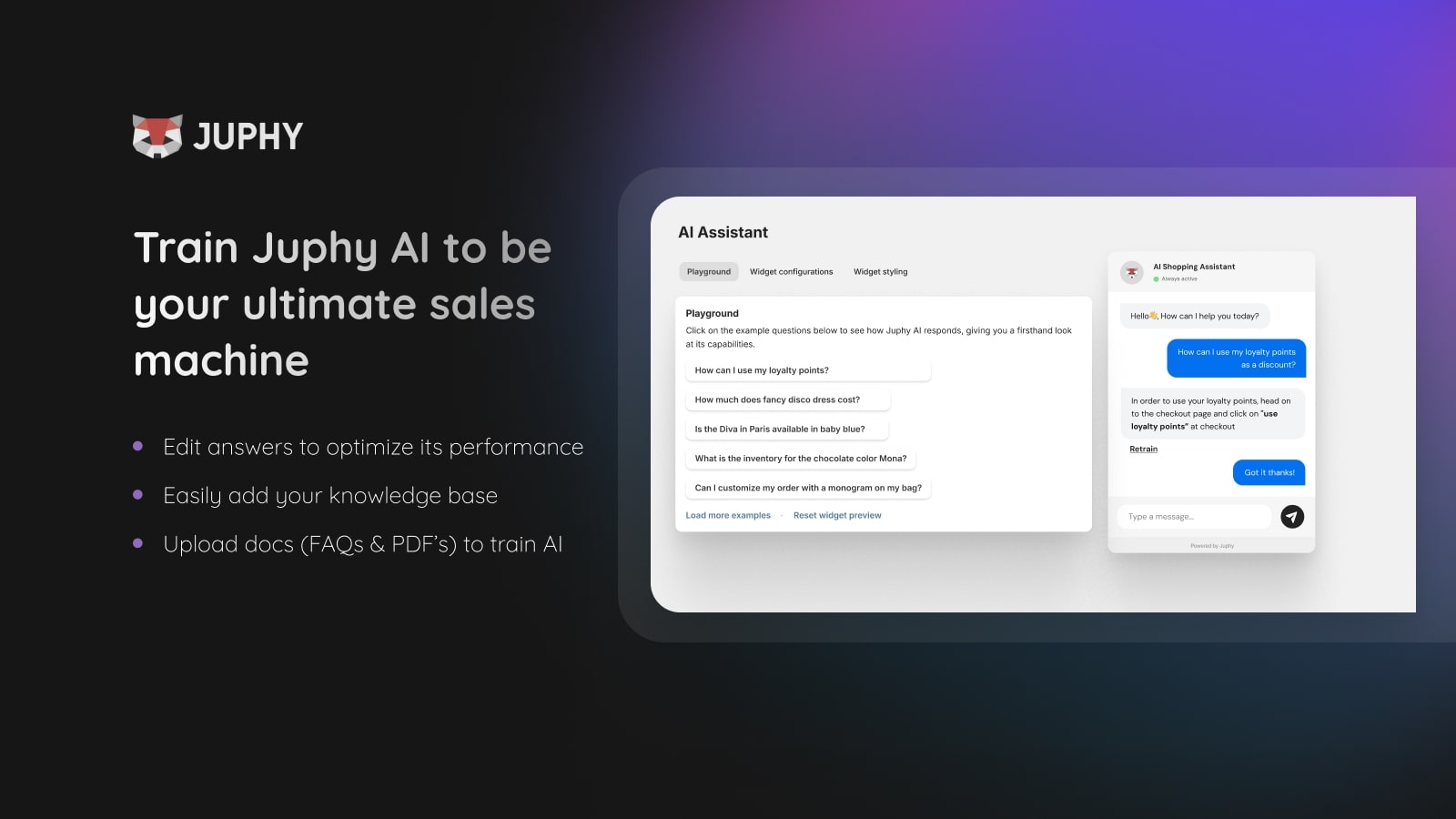Maximizing Your Store’s Potential with Shopify Automation
İpek Aktaş
Automation has transformed many aspects of our lives, allowing us to save time on various tasks.
Numerous manual and repetitive tasks used to consume our daily effort, distracting us from more critical work.
In e-commerce, particularly with platforms like Shopify, automating these tasks can significantly enhance the quality of work, allowing store owners to focus on growth and customer engagement.
Learn about Shopify automation and the areas that can be automated so you don’t waste your expensive time on repetitive tasks.

The Role of Automation in Modern E-Commerce
Social selling, conversational selling, omnichannel strategies, and personalized marketing are just a few examples of how digital selling has evolved.
However, it’s not just sales methods that have transformed; e-commerce operations have also undergone significant changes.
In these modern e-commerce businesses, some repetitive tasks can consume significant time and effort and often deliver less return on investment (ROI) compared to resource allocation. Automating these tasks can greatly improve efficiency and profitability. Here is a list of such repetitive tasks:
- Inventory management
- Order processing
- Customer service responses
- Data entry
- Price monitoring and updates
- Email marketing
- Product listing updates
- Accounting and financial tasks
- Returns processing
- Review monitoring
- Marketing campaign tracking
- SEO monitoring and adjustments
For example, manually tracking and updating inventory levels can be time-consuming. Similarly, manually processing orders—including confirmation, packaging, shipping, and tracking—can become quite cumbersome, especially with high order volumes.
Think about the time wasted on responding to common customer inquiries about products, order status, returns, and shipping details.
By identifying these repetitive tasks and evaluating automation or more efficient management tools, e-commerce businesses can significantly improve their operational efficiency and focus more on strategic growth drivers.
Understanding Shopify Automation
Shopify automation helps store owners reduce time spent on administrative tasks, focus more on strategic growth, and ensure that their stores deliver a consistent customer experience. This functionality not only encourages a more productive operation but also supports scalable growth.
What is Shopify Automation?
Shopify automation consists of tools and features on the Shopify platform designed to automate repetitive and time-consuming tasks when running an e-commerce store on Shopify.
These automation points help sellers simplify operations, increase efficiency, and ensure high levels of customer engagement without constant manual effort.
At its core, Shopify automation uses triggers – specific events or actions performed by customers or store managers – to start predefined workflows. These workflows consist of conditions and actions that are automatically executed to perform various tasks, from marketing communications to order processing.
Key Areas of Your Store That Can Be Automated
There are several important tasks that can be automated in your Shopify store, such as:
- Order fulfillment:
- Automate sending confirmation emails and updating order statuses.
- Automatic generation of shipping labels.
- Notifications to customers about shipment progress.
- Inventory management:
- Notifications for low stock levels.
- Automatic updates to inventory counts as sales occur.
- Marketing and email campaigns:
- Sending targeted marketing emails automatically.
- Automating re-engagement emails for inactive customers.
- Creating and managing promotions and discounts automatically.
- Customer service:
- Auto-responders or chatbots handle common inquiries about products, order status, returns, and shipping details.
- Automated responses for negative reviews or feedback.
- Tagging and categorization:
- Automatic tagging of orders, products, and customers to facilitate easier management and retrieval of information.
- Analytics and reporting:
- Gathering and analyzing customer data to inform business decisions.
- Automated reports on sales performance, customer behavior, and inventory needs.
- Fraud detection:
- Setting up workflows to flag and manage high-risk orders or potential fraud.
- Customer engagement:
- Automated workflows for customer loyalty programs, such as rewards for high-value purchases.
- Follow-up campaigns for abandoned carts.
- Shipping and logistics:
- Automating calculations of shipping costs and managing logistics.
- Upselling and cross-selling:
- Automated suggestions for related products or special offers based on the customer’s current cart contents.
These are points that can be considered to automate as your business volume increases. Let’s take a closer look at the most important tasks that should be automated in Shopify.
Streamlining Operations with Automation
One of the most basic and essential automations is the operational part. It is the backbone of a customer shopping experience and should be run properly. For this purpose, you should automate your inventory management, order fulfillment, and administrative tasks.
Inventory Management and Order Fulfillment
Managing inventory and ensuring efficient order fulfillment is fundamental to maintaining customer satisfaction and operational success.
Automation in these areas can change the way Shopify store owners manage their stock and process orders, making the system less error-free and more responsive to demand surges.
Inventory Management
Shopify inventory management automation continuously monitors stock levels and automatically aligns the inventory volumes and customer demand. With inventory automation, you can:
- Get information about the availability of specific items or risky stocks
- Update inventory when a product is sold or received
- Streamline inventory flow
- Remove items that are out of stock or no longer on sale
- Re-add the product that is in stock
- Monitor demand fluctuations or overstock
You can set up inventory tracking in the Inventory settings in the admin panel. In there, you can also;
- View your inventory
- Adjust your inventory levels
- See the inventory history and adjustments together

You can also track the quantity of each product or variant. If an item is out of stock at one location but available at another, Shopify can split the order across locations.

These automation points prevent stock-outs, overstock situations, and false stock updates, helping to maintain the perfect balance needed to meet customer demand without wasting capital on inventory.
Order Fulfillment
From the moment a customer places an order, Shopify order fulfillment automation takes the wheel, confirming the order and processing payment, sending confirmation emails updating order statuses, and notifying customers about shipment progress.
It prevents manual order checking and confirmation and helps you with the following;
- Automation of the ordering process
- Taking orders that are ready for shipment to the next stage
- Flagging and keeping orders that need to be taken attention before shipment
- Preparation of draft shipping labels
- Sending follow-up messages to customers about their shipments
In addition to Shopify’s core functionalities for automating order fulfillment processes, specialized tools are available that can further enhance and streamline operations.
Order Automator is designed to save time by automating tasks like tagging orders, managing fulfillment, monitoring for fraud, and more.

Order Automator works round-the-clock to apply automation based on specific rules you set up within your Shopify store. For instance, it can tag orders based on various conditions such as product vendor, shipping region, or order value.

The app can send notifications, add tags, and handle other repetitive tasks that would otherwise need manual work.
With tools like Order Automator, store owners can customize their automation workflow to match the unique needs of their operations.
Simplifying Repetitive Administrative Tasks
Repetitive administrative tasks are a necessary but time-consuming aspect of running an e-commerce store. Automating these can drastically reduce the likelihood of human error and free up significant time.
- Customer notifications
- Returns and refunds
- Data entry and reporting

Customer notifications are one of these repetitive tasks, that can be really boring if not automated. When a customer places an order, they immediately receive a confirmation email. If their order is shipped, they get a dispatch notification with a tracking number, and once the order is delivered, a delivery confirmation message is sent out.
Shopify can be configured to send out these notifications automatically. Through Shopify’s settings, you can personalize email templates with your branding and set them to trigger at different stages of the delivery process.
Returns and refunds happen frequently. Processing returns and issuing refunds is often complex and open to errors when done manually, especially if you’re dealing with high volumes of orders.
Shopify’s automation can handle the initial steps of the return process. When a customer initiates a return, the system can automatically generate a return label, update inventory levels, and, if the return is accepted, trigger a refund to the customer’s payment method of record. You can activate self-serve returns in your Shopify admin.
Data Entry and reporting tasks include updating product listings, entering new inventory data, and creating sales reports. Again, these are important but repetitive tasks that can consume hours of time.
Shopify allows for bulk product uploads and updates through CSV files, and apps within Shopify can automate inventory syncing across multiple platforms. Additionally, Shopify can generate various reports on demand or a schedule, providing insights into sales trends, customer behavior, and inventory management.
Enhancing Customer Experience
Automation is important for operational work, but it also has a great impact on improving customer experiences. It makes businesses’ work much easier and enhances the customer experience without the need for manual work.

When done correctly, Shopify automation offers a powerful toolbox for creating a smoother and more satisfying customer experience.
Implementing the right automation strategies can significantly enhance your Shopify store’s customer experience by ensuring timely responses and personalized interactions.
Remember, the key is to find the right balance between automation and human touch.

Let automation handle repetitive tasks while your team focuses on providing exceptional personalized service when needed.
Automated Customer Service Touchpoints
Service touchpoints are essential at any point of interaction between your store and the customer using automation. There are pre-purchase touchpoints, purchase touchpoints, and post-purchase touchpoints, as well as additional touchpoints.
Pre-Purchase Touchpoints
- Product Inquiries
- Chatbots for recommendations
You can implement AI chatbots like Juphy’s AI Agent to answer common questions about products, sizing, availability, and more, allowing potential customers to get immediate responses without waiting for human intervention.
You can also use such automation tools to provide personalized product recommendations based on the customer’s browsing history and preferences.
Purchase Touchpoints
- Automated checkout process
- Order confirmation
- Payment processing
You can improve the checkout experience with auto-filled customer information and real-time updates on shipping costs and delivery times based on the customer’s location.
Automation also allows you to send detailed order confirmation emails or SMS messages once a purchase is made, providing customers with reassurance and order details.
Post-Purchase Touchpoints
- Order status updates
- Feedback and reviews
- Return and exchange handling
With post-purchase automation, you can send automated follow-up messages to gather customer feedback or request product reviews. This can enhance customer engagement and provide valuable insights for future improvements.
Additional Touchpoints
- Loyalty programs
- Ticket routing and prioritization
- Multi-channel support
You can manage loyalty points and rewards through automated systems that track customer purchases and interactions and send personalized offers or rewards based on their actions.
Also, by using AI to automatically categorize and prioritize customer support tickets based on urgency and topic, ensuring that critical issues are addressed promptly.
Integrate your customer support across various platforms (like email, social media, and live chat) using a unified system that can automatically manage and respond to inquiries from all channels.
By automating these key customer service touchpoints in your Shopify store, you can ensure a smoother, more efficient interaction with customers at every stage of their journey.
This not only improves the customer experience but also frees up your team to focus on more complex customer needs, driving better business outcomes.
Personalized Marketing and Email Campaigns
Personalization is very important. Why? Because there are chatbots are everywhere, but people want accurate answers regardless of other factors.

Shopify automation can create a more engaging and rewarding customer experience because it improves segmentation and targeting, provides campaign examples, and takes personalization to another level with product recommendations, pop-ups, and banners.
This way, it provides a more personalized form of marketing to reach out to your customers.
You can segment your audience based on their purchase history, demographics, and browsing behavior and send email marketing messages with dynamic content such as names, recommended products, and relevant promotions.
Plus, newcomers can be welcomed with special offers, inactive customers can get exclusive discounts, and cart abandoners can be reached with targeted incentives.
Implementing Shopify Automation Tools
Shopify offers more than one way to implement automation tools in your store, depending on your needs and technical comfort level.
Shopify Flow: Creating Custom Workflows
Shopify Flow is an automation solution that works as an event-based feature that lets you create automated workflows.
This built-in automation tool allows you to automate sequences (as you might expect from the name), a.k.a. automation that is triggered by specific events in your store, like a new order or an abandoned cart. You can decide on the actions that will happen automatically, like sending an email or updating the inventory.
So, it simply helps create workflows for your tasks and processes within your store by using components like triggers, conditions, and actions.

Shopify Flow offers pre-made templates for common tasks, making it easy to get started even if you are new to the site.
Utilizing Shopify’s Built-in Automation Features
Shopify’s built-in automation features primarily revolve around Shopify Flow, but both have their own advantages and disadvantages.
There are also some additional functionalities within Flow that contribute to a more automated workflow.
The choice between Shopify Automation and Shopify Flow largely depends on the scale of your operation and the complexity of the workflows you need to automate.
For smaller stores or those with straightforward automation needs, Shopify’s built-in automation provides a user-friendly and efficient solution.
Monitoring and Optimizing Automated Processes
You need to monitor and optimize your automation processes in Shopify to ensure they run smoothly and deliver the desired results.
- Identify relevant KPIs for each automated process. This could email open rates for abandoned cart recovery workflows, the order processing time for fulfillment automation, or conversion rates for automated discount campaigns.
- Shopify Flow offers a dashboard with analytics specifically for your workflows. Monitor metrics like the number of times workflows are triggered, completion rates, and error logs. Identify bottlenecks or areas where workflows aren’t performing as expected.
You can also use Shopify’s built-in analytics or integrate tools that provide detailed reports on your automation’s performance.
Tracking the Performance of Automation
By monitoring each automated process closely, you can understand its impact on your business operations and customer satisfaction.
Analyze trends over time to see which automations yield the best ROI and which may need tweaking or discontinuation.

In Shopify Reports, Marketing sections provide you with insights and analytics regarding your marketing campaigns and automation.
Adjusting Strategies for Better Efficiency
As you gather data on your automation’s performance, it’s important to remain flexible and ready to adjust your strategies.
If certain automations are not meeting expectations, consider refining the triggers, conditions, or actions involved.
Experimenting with different configurations can lead to improvements in efficiency and effectiveness.
And always update your strategies with new Shopify features and third-party tools that can provide additional opportunities to enhance your automation processes and performance.
Juphy AI: Supercharging Shopify Automation
Juphy’s AI Agent is an advanced AI-based chatbot that integrates natively with your Shopify store to provide AI sales assistance and customer service to your customers. With the ‘Built for Shopify’ badge, it’s accessible directly from your Shopify dashboard.

Its system is based on automation, enhanced with the power of artificial intelligence to improve as it collects more data.
Without an online shopping assistant, you could be losing up to 50% of your customers.
The automation provided by Juphy AI is essential in this regard, offering capabilities such as 24/7 support in over 98 languages, customer service, interactions, and product recommendations.
Leveraging Juphy AI for Enhanced Customer Interaction
Juphy’s AI Agent improves customer interactions with your Shopify store by analyzing their browsing patterns and past interactions. By providing real-time, personalized responses, it ensures that every customer feels attended to immediately.

Juphy AI chatbot integrates into your website to improve customer interactions
This capability significantly reduces the chances of cart abandonment and increases customer satisfaction by delivering instant assistance and personalized shopping experiences.
With Juphy AI, your customers can find products, get answers to their questions, and receive recommendations without any delays.
Automating Customer Support and Engagement with Juphy AI
Effortlessly automate your customer support and engagement with Juphy’s AI Agent. It handles routine tasks such as answering FAQs, tracking orders, and providing product recommendations, which traditionally require substantial human effort.

By handling these tasks automatically, Juphy AI frees up your team to focus on more complex customer service issues.
Conclusion
Shopify’s automation capabilities, including Shopify Flow and its built-in features, streamline everything from order processing to marketing, freeing up your time for strategic growth.
Integrating Juphy’s AI Agent takes customer interaction to the next level with 24/7 support and personalized product recommendations, enhancing customer satisfaction and reducing cart abandonment.
By leveraging Shopify automation and Juphy AI, your store can efficiently handle increased demand and adapt to changing customer needs, improving operational efficiency and driving better business outcomes.
Key Takeaways
- Automation tools reduce the time spent on manual tasks, allowing you to focus on growth and innovation.
- AI, like Juphy AI, offers 24/7 customer service, making interactions faster and more personalized.
- Automated processes like targeted email campaigns and chatbots help drive conversions and decrease cart abandonment.
- Automating inventory and order management ensures accuracy and timely updates, keeping your business organized.
- With automation, your store can easily adjust to increased demand and changing customer needs without additional strain on resources.
